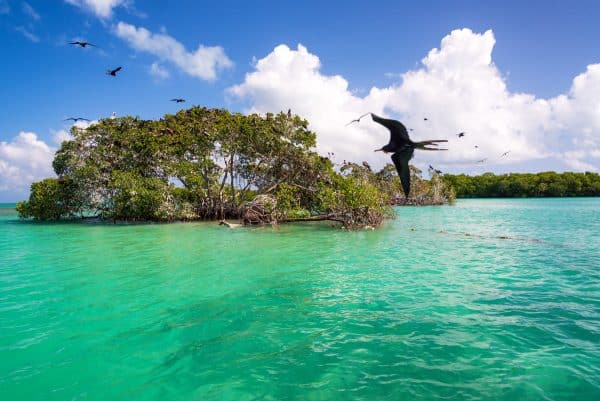Features of Places – People & Places Incursion

Geography
Syllabus Outcomes GE-1 | GE-2 | GE-3
$24.00
All parents and teachers can attend for no additional cost.
+GST. As this program is an educational service, all GST charged can be reimbursed in its entirety by the Government. (Minimum charge of x35 students).
About
On this engaging incursion, students explore the natural and human features of places in Australia, what makes them special, how technology has affected our use of places, and what activities occur there. Our Rangers will lead students in an exciting presentation using tools such as taxidermy animals; and demonstrate environmental factors in a range of environments in Australia such as parks, farms, beaches and bushland; and prompt students to think about how different places are used. Through interactive activities such as waterworks, bug catching, habitat-making and building bird houses your students will learn about the connections that people have with different places and spark their creative side. They’ll use geographical tools to interpret and communicate information they gather, such as using identification charts to classify bugs they catch. In these educational and hands-on activities, students identify the changing features of places, the ways in which people interact with and care for places. and how spaces within places can be used for different purposes. They’ll observe the different factors which affect people’s connection to places and take in the natural world in this unforgettable, hands-on incursion experience!
Syllabus Outcomes Addressed
GE1-1 describes features of places and the connections people have with places
GE1-2 identifies ways in which people interact with and care for places
GE1-3 communicates geographical information and uses geographical tools for inquiry
Arrive/Depart
Full Day Incursion (5 Hours) 9:30am – 2:30pm
Time allocation for incursions can be tailored and adjusted to suit your individual school timetable and scheduling.
What's Included
 |
Syllabus Content Focus
Key inquiry questions answered
- What are the features of, and activities in, places?
- How can we care for places?
- How can spaces within a place be used for different purposes?
- Where are places located in Australia?
- How are people connected to places?
- What factors affect people’s connections to places?
Features of places
Students:
- investigate features of places and how they can be cared for, for example:(ACHGK005)
- description of the natural and human features of places
- consideration of how a place can be cared for eg a park, farm, beach, bushland
How places are organised
Students:
- investigate activities that occur within places, for example:(ACHGK007, ACHGK008)
- discussion of why and how the spaces within places can be rearranged for different purposes
Australian places
Students:
- investigate places across a range of scales within Australia (ACHGK010)
People’s connections to places
Students:
- investigate people’s connections and access to places, for example: (ACHGK013)
- discussion of why people visit other places
- identification of factors influencing people’s accessibility to places eg distance
- examination of how technology has improved people’s access to places
Day Outline
| Rangers arrive at your school for approx. 8:30am for set up. Incursion duration 9:30am- 2:30pm |
|
| Introductory Presentation | The day kicks off with a meet and greet with our enthusiastic Rangers followed by an interactive and engaging presentation. (approx. 25-35 minutes) |
| Grouping: Students are divided into their groups of approximately x 30-35 students and are allocated a Ranger guide for each activity. | |
| Activity 1 | Students participate in each activity for approximately 35 minutes. |
| Activity 2 | Students participate in each activity for approximately 35 minutes. |
| Activity 3 | Students participate in each activity for approximately 35 minutes. |
| Activity 4 | Students participate in each activity for approximately 35 minutes. |
| Activity 5 | If time allows |
| School scheduled break times (lunch and recess) remain as usual. 2:20-2:30pm Wrap Up / Conclusion |
|
Activities
Introduction: Our Rangers will start the day with an exciting and engaging presentation featuring taxidermy animals; with focus on the importance of different places to people and living things, why people need to protect places, features of places, how humans can protect places and human connections to places.
Note: In school hall or a large COLA area preferred.
Activity 1: Waterworks – Students get their hands all slimy with child friendly craft paint, shampoo, vegetable oil, talcum powder, sunscreen and water. Students will look at ways to protect our waterways sustainably and the importance of our rivers, creeks, beaches and lakes.
Note: This activity is best run outside on either grass or a concrete area that can easily be hosed down. As we are experimenting with different materials, there is the possibility of spillage. We will ensure that we clean up any mess that may be created.
Activity 2: Building Bird Houses – Students identify the importance of trees and tree hollows within our national parks as they make bird houses in small groups. At the end of this activity students will place these around the area to attract local wildlife. They’ll be excited to come back after a few weeks and discover what species are living in their specially-made habitats. A great way to give back to our wildlife community!
Note: This activity can be run anywhere incl. inside a classroom, hall, COLA or playground area. Students will just need a space to place their bird houses at the conclusion of the activity.
Activity 3: Bug Catching on School Grounds – Students will have faces camouflaged in child-friendly face paint. They will be given small clear jars with lids to catch anything creepy crawly they find in school grounds -spiders not allowed. This activity demonstrates the biological diversity of environments and the variety of species that can live in habitats. This activity also focuses on how animals have adapted to live within our cities and built-up urban areas and how humans need to create green spaces for our animals. Students will be able to identify what they have caught as they cross reference their bug to the identification sheets provided.
Note: This activity is best run in a garden area of the school where insects are likely to be found.
Activity 4: Habitat Making – Students work together in small teams to create an animal home for possums, wombats, wallabies, penguins and more. Each group will be given a large array of sticks, bark, leaves and branches to make specific animal homes. This activity focuses on the destructive human influence on environments and why we must protect habitats for different species. Students work together in groups and their creative side will be sparked as they create an elaborate animal dwelling/ habitat.
Note: This activity is best run outside on a school oval or playground area. As we are using natural materials such as bark, leaves and branches, this could create debris.
Activity 5 (Optional, if time allows): Features of Places Olympics – Students will be split in two teams working together to race each other in a competitive game against the clock. This highly competitive competition will have your students shouting, screaming and cheering with their peers as the teams discuss strategies and tactics on how to beat their competitors. Students can discuss the answers and problem-solve the questions based around what they learnt in the morning introductory presentation.
Note: In a school hall or on a grassy area such as an oval.
$24.00
All parents and teachers can attend for no additional cost.
+GST. As this program is an educational service, all GST charged can be reimbursed in its entirety by the Government. (Minimum charge of x35 students).
Choose Your Date
Step 1 of 3
Please note this is a tentative booking. After your booking request is submitted, we will be in touch via email to confirm the requested date and arrange the final details for the booking.

